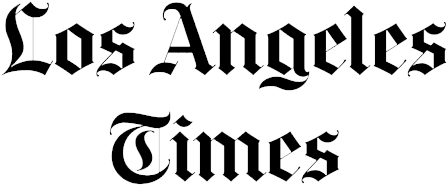Types of Fats in Food: Simple Dietary Guide for Different Kinds, Unsaturated Fats, Saturated Fats and Trans Fats
Types of Fats in Food
Basic food guide for several fatty acids, including unsaturated fats, saturated fats, and trans fats.
♥ Too much fat in your diet can lead to health complications like heart disease, obesity, and type 2 diabetes.
But just as important as not exceeding your daily limit is monitoring the types of fat going into your body. Many foods contain a combination of healthy and not-so-healthy fats.
You Should Avoid

Fatty Acids in Food to Avoid
First, let's start with the two types of fatty acids we should limit.
Saturated
Saturated Fats Type
Saturated fat is most found in foods such as dairy, meats, and tropical oils.
♥ Saturated fats are also called solid fats because they are solid at room temperature.
♥ It is wise to limit one's dietary intake of saturated fats since these raise our low-density lipoprotein cholesterol levels, LPL, what we refer to as bad cholesterol, increasing both one's risk of cardiovascular disease and type 2 diabetes.
Foods high in saturated fat.
♥ Fatty meats: poultry with skin.
♥ Dairy: egg yolk, butter, cheese, ice cream, milk and whole milk.
♥ Tropical oils: coconut and palm.
♥ Processed grain products: cake, cookies, and muffins.
Trans
Trans Fats Type
Trans-fat is the only fat that is predominantly manufactured and can be found in many processed foods, snacks, and some salad dressings.

When unsaturated fats are subjected to a process known as hydrogenation, these fats become harder at room temperature, thus having a longer shelf life.
Many snack food companies now boast on their packaging no trans fats, making their foods appear to be healthier. But don't be fooled.
The absence of trans-fat doesn't automatically make a snack healthier; it could have a high concentration of saturated fat, which is why it's important to read the label.
Foods high in trans fat.
♥ Margarine.
♥ Prepackaged mixes: cake, cookie, and biscuit.
♥ Fried fast foods.
♥ Frozen foods.
♥ Any product that lists partially hydrogenated oil in the ingredients list.
Unsaturated
Unsaturated Fats Type
Unsaturated fats are commonly called good fats or healthy fats. Yes, these phrases do seem to conflict with what we have been told by health experts in the past, but it's not true.

Unlike saturated and trans fats, these fats are liquids at room temperature.
Unsaturated fats are usually found in nuts, oils, seafood, and some vegetables.
Eating unsaturated fats may help lower your LDL cholesterol levels and raise your high-density lipoprotein cholesterol, HDL, or good cholesterol levels.
♥ There are two types of unsaturated fats, monounsaturated fat and polyunsaturated fat.
♥ Eating foods with these fats in moderation have been proven to have several health benefits. Of course, you must cut down on your saturated and trans fat intake to reap the benefits of unsaturated fats.
Monounsaturated
Monounsaturated Fats Type
Monounsaturated fats are generally high in antioxidant vitamin E.
Adding foods high in monounsaturated fats in moderation can reduce the chance of heart disease and are beneficial to controlling blood sugar and insulin levels. This dietary fat can be beneficial for diabetics, or individuals who are overweight or obese.
Foods high in monounsaturated fats.
♥ Avocados.
♥ Oils: canola, olive, peanut, and sesame.
♥ Nuts: almonds, cashews, pistachios, peanuts, pecans, and sesame seeds.
Polyunsaturated
Polyunsaturated Fats Type
Polyunsaturated fats are found in seafood, some seeds, and vegetable oils.
Omega-3 fatty acid is a type of polyunsaturated fat found in salmon; our bodies cannot produce Omega-3s but need them to function properly.
♥ Eating foods with polyunsaturated fats, in moderation, are also believed to lessen the chance of heart disease.
Foods high in polyunsaturated fats.
♥ Fish: mackerel, salmon, and tuna.
♥ Oils: corn, safflower, soybean, and sunflower.
♥ Pumpkin and sunflower seeds: walnuts.
The Marketing
Fatty Acids in Foods Marketing
Food companies have launched marketing campaigns demonizing fats in our diets.
Stroll down an aisle at your local supermarket and take in the vast array of snacks, condiments, and frozen entrees in packages claiming these foods are low-fat, reduced fat or contain no trans fats.
♥ Sure, these products just might meet the criteria of having a lower fat content, but are they a healthy alternative?
Over the last decade, researchers have been reevaluating the role fats play in our diets; some findings even debunk ideas previously presented as scientific fact.
As it turns out, our bodies need fats to absorb certain vitamins, A, D, E and K, and Omega 3 fatty acids, which our bodies cannot produce on their own to function.
♥ The fact of the matter is not all fats are bad.
♥ We need fats in our diet.
♥ Even raw veggies like broccoli and watermelon have trace amounts of fat.
Of course, this information is not a license to go eat a double cheeseburger combo meal, but we can benefit from the knowledge that not all fats are bad fats.
Moreover, when regulating the amount of fat going into our bodies, being told to restrict fat intake is both problematic and arbitrary.
How Much Is Too Much
How Much Fat in Your Diet Is Too Much?
Find out how many grams of fat per day the American Heart Association recommends here.

Help Me
Design My Fat Intake for Me
Using the latest science and research, the team at changingshape.com offers plans developed by certified nutrition and fitness professionals. Join the changingshape.com calorie counter app free today.




